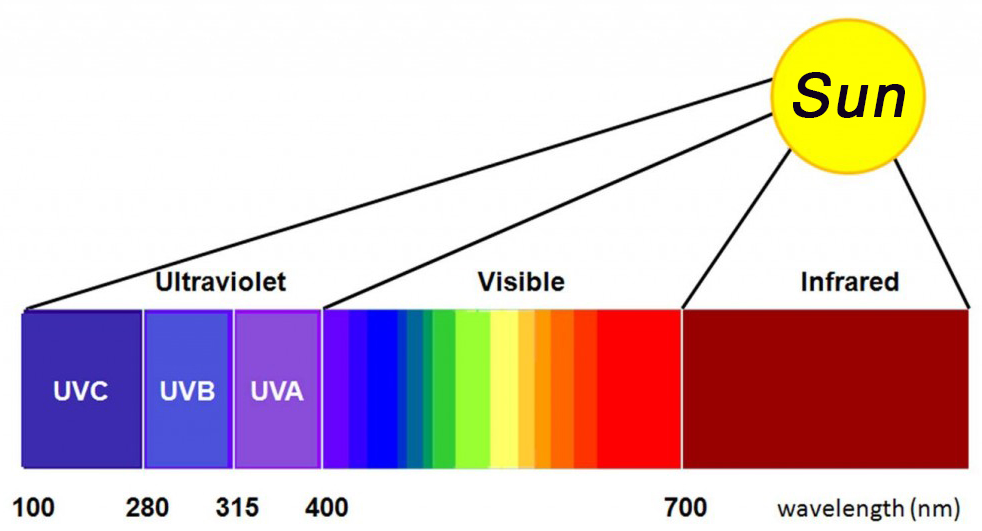Is sunbathing helpful in treating vitiligo?

Content
1 About sunbathing
1.1 What's contain in Sunlight
1.2 Is sunlight safe for vitiligo friends?
2 About Vitiligo
2.1 What is vitiligo
2.3 Treatment for vitiligo
2.4 UV Phototherapy
2.5 Comparing UV and sunbathing
3 Tips in daily life if you have vitiligo
1 About sunbathing
Summer is coming, it's perfect time spend our holiday on the beach, enjoying the sunshine, surf in the sea, embrace the nature.And many friends has vitiligo has questions whether they can enjoy the sunshine freely or does sunshine doing something good about treating vitiligo? Is sun exposure effective for treating vitiligo?

1.1 What's contain in Sunlight
Sunlight is a form of electromagnetic radiation that is emitted by the sun.
It contains a wide range of wavelengths, including ultraviolet (UV) radiation, visible light, and infrared radiation.
The visible light portion of sunlight is what we see and is made up of different colors, including red, orange, yellow, green, blue, indigo, and violet.
UV radiation, which is not visible to the human eye, can cause damage to skin and eyes with prolonged exposure.

Sunlight also contains small amounts of X-rays, gamma rays, and radio waves, but these are typically absorbed by the Earth's atmosphere before they reach the surface, an
d as we all known that they're all harmful to our skin.
1.2 Is sunlight safe for vitiligo friends?
As we talked there're many kinds of light, uv light, visible light and kinds of rays in sunlight, and only special band of which the wavelength ranges from 300nm to 400nm is effective for treating vitiligo, so after we have vitiligo, it's not suggested to have sun exposure instead of uv phototherapy. UV photothery use pure ultra light, which is safer and effective.

2 About Vitiligo
2.1 What is vitiligo
Vitiligo is a common depigmented skin and mucous membrane disease, characterized by the disappearance of functional melanocytes in the skin and the reduction of melanin granules.
2.2 What causes vitiligo
The exact pathogenesis of vitiligo is still not fully understood. Under histopathology, dendritic cells and T lymphocytes gather at the edge of vitiligo leukoplakia, and activated T lymphocytes overkill and damage melanocytes, resulting in the disappearance of functional melanocytes.
The main causes of vitiligo include but not limited among,
Genetic factors, neuropsychiatric factors, autoimmune factors, oxidative stress factors, melanocyte self-destruction hypothesis, other factors such as
Trace element deficiency, sun exposure, and chemical substances (formaldehyde, phenol, etc.) are also related to the onset of vitiligo.
Predisposing factors
Before the onset of vitiligo, some patients have some predisposing factors.
Emotional changes: mental stress, emotional anxiety, insomnia, etc.
Physical and chemical factors: exposure to chemical substances, sun exposure, trauma, etc.
Major life events: major surgery, pregnancy, major mental trauma (such as the death of a family member or friends), etc.
2.3 Treatment of vitiligo
Generally speaking, the conventional treatment of vitiligo include oral corticosteroids, topical corticosteroids, phosphatase inhibitors such as tacrolimus, or skin grafting.
And there's a more common and safer treatment, uv phototherapy, Ultraviolet phototherapy is currently the first-line treatment, and can be either localized or full-body.
2.4 UV Phototherapy
The mechanism of ultraviolet treatment of vitiligo is that ultraviolet radiation penetrates the skin to reach the junction of epidermis and dermis, which affects or induces the apoptosis of T lymphocytes, which is beneficial to the functional restoration of melanocytes, and then there'll be repigment.
2.5 Comparing UV and sunbathing
| comparing | Sunbathing | UV light therapy |
| Light source | uv, visible light,rays | UVA and UVB |
| Light source purity | mixed light and unknow purity | high purity of certain band light |
| uder control or not | No | Yes |
| Safe classify | Low, easy to get sunburn | much safer |
| Application | tanning | skin conditions including vitiligo |
3 Tips in daily life if you have vitiligo
a. See the dermatologist first and get professional diagnosis
b. Reasonable diet,avoid eating foods rich in vitamin C
c. Keep a regular schedule, avoid staying up too late
d. Maintain excise and enhance and improve the immunity
e. Please do remember to do sun protection after you have the phototherapy when you go outside
